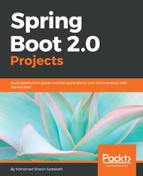Congratulations on completing this chapter, where the skills and knowledge required to write applications in the Kotlin language and its features were discussed in detail. This chapter started off by explaining what the Kotlin programming language is and how it differs both in terms of development and maintenance. It talked about the syntax, safety, interoperability, and developer-friendliness of the Kotlin programming language.
This chapter also discussed how to get started using the Kotlin programming language by explaining its basic data types, literals, string interpolation, conditional statements, and so on in detail.
Subsequently, the chapter talked about how to do OOP using Kotlin. It explained the concepts of class, interface, inheritance, extensions, and enums in detail. It also talked about some features unique to Kotlin such as object expressions, object declarations, and companion objects in simple terms.
Eventually, the chapter talked about some of the advanced features of Kotlin such as infix functions, local functions, default arguments in functions, and named arguments in a function. This chapter has provided enough knowledge to help developers learn the Kotlin programming language easily and quickly. This knowledge can be used to build Spring Boot 2.0 applications using the Kotlin programming language. We will learn about more complex Kotlin application development in up coming chapters.
